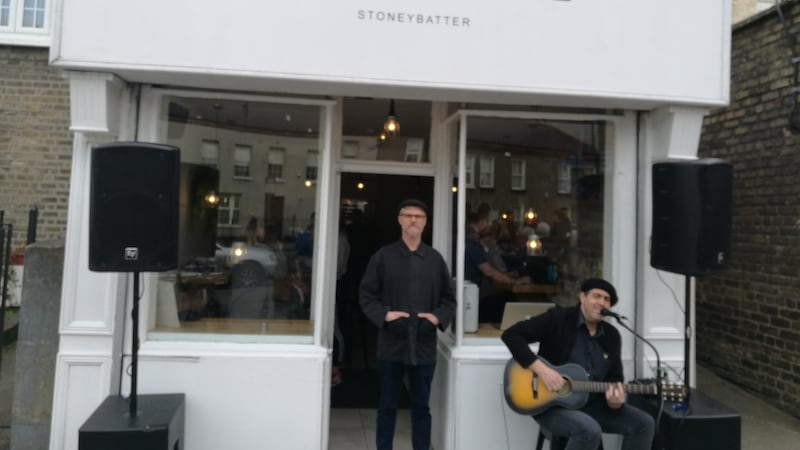Dozens of local people gathered in Stoneybatter in Dublin on Saturday to oppose plans to remove trees, footpaths, green spaces, loading bays and parking areas in order to make space for the capital’s Bus Connects plan.
The National Transport Authority is proposing that a bus corridor from Blanchardstown to the city centre would pass along the Navan Road and Old Cabra Road before continuing down Prussia Street, Manor Street and Blackhall Place in Stoneybatter.
Locals say the proposal would involve the removal of public amenities as well as the redirection of traffic down residential streets.

Standing at the junction of Prussia Street and Aughrim Street on Saturday, across the road from the house where she has lived for 52 years, Audrey Gray says the area has changed immensely in her lifetime.
“I was born in the parish and I’ve lived here all my life,” she says. “I can remember when you could walk across Manor Street, there wasn’t a car around. Now you really have to go to the traffic lights or you’d be made mince meat out of.
“Even when I was married going into that house across the road 52 years ago, there was cattle running around the place. You’d hear pigs squealing at five o’clock in the morning. It’s all changed now.”
Directing
Ms Gray says the plans are “making a mess of the place” by directing extra traffic up smaller road like Aughrim Street.
“If you were driving up there at night and there was a bus coming down, somebody has to stop,” she says. “There were never any green here and now they want to take it away. It’s lovely the bit of green. We’re after doing a lot with the place and everyone takes pride in putting the flowers out and that kind of stuff. To take it all away now, it’d be dead.”
Jim Grant, who owns a school uniform supply shop called Grants on Manor Street that has been in the family since 1922, is concerned at the loss of parking in the area.
“Manor Street is a really nice area. I was born here. My shop is at number 7 and I was born at number 4. The whole area is coming together really well at the moment. Businesses in the area are thriving,” he said. “But you have to really want to get to Manor Street. How are people going to be able to get here? We have survived the recession and we’re getting back on our feet. People have to be able to get to us and they have to be able to park. I don’t think it’s a runner.”
‘Thin streets’
Ken Flood, who owns Love Supreme, a cafe that has been operating in Stoneybatter for five years, says business is “great, and growing” at the moment.
“Dublin is an ancient city. It’s full of narrow, thin streets. That’s what’s attractive about it and that’s why people come here. We don’t want that to change. A metro is what every other city in the world has used to alleviate traffic issues,” he says.
“Villages close to the city are rare, and they’re great. They’re lovely little hubs. If cars don’t have access to the little businesses down there, they’re going to suffer. There’s going to be trucks making deliveries pulling up in a bus lane.
“The buses are going to be two metres from our front door. It’s going to change the environment directly in front of us. In terms of access, we have people who drop in as they are driving past. Nobody will be allowed do that now.”








